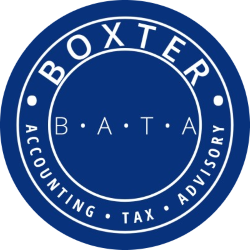Q: What can be done/accessed on the Client Portal
A: The Client Portal offers our clients many useful tools to access and exchange information with our office at anytime.
- All prior year tax returns prepared by our office can be viewed or downloaded along with a majority of the source documents (W2's/1099's) used in the preparation.
- The annual client tax organizer is available in early December & can be completed entirely online or printed if desired.
- A secure file exchange section is available to upload and download files to and from our office.
- Links are available to check your refund status as well as the status of various property tax relief programs offered from NJ, request a transcript from the IRS, request certain tax documents such as NJ state unemployment.
Q: I am a new client, what information will you need to prepare my tax return?
A: In addition to the normal tax preparation documents received from your employer (W2's) and financial institutions (1099's), we ask that new clients bring a copy of the prior 2 years tax returns, driver license copies, contact information, and date of birth & social security numbers of all dependents, along with any other pertinent information.
Q: How long do I need to keep my tax return and other related documents?
A: The standard rule for keeping tax returns is simple, forever. As for documents and receipts used to prepare the return the rule is seven years plus the current year. For example, for year 2024 you should retain documents dating back to January 1, 2017. When purging old records be sure to destroy them to protect against identity theft by using a crosscut shredder.
Q: Do I need a paper copy of my tax return?
A: Every taxpayer is required to receive a copy of their return from their tax professional when it is prepared. A paper copy is not required because other electronic methods have become accepted by government agencies and popular with clients. Other acceptable methods for taxpayers to receive a copy of their tax return are via the online portal or email. If an alternative electronic method is chosen, be sure to make backup copies.
Q: What information do I need to substantiate my charitable donations?
A: By law all charitable contributions claimed as a deduction on your tax return must be substantiated by keeping a written record of the contribution. Contributions of $250 or more require a statement from the charitable organization. If the tax returns are examined by the IRS, requests may be made for the written record of the contribution. It is recommended that for any charitable contributions claimed, you retain the written records for at least seven years. Acceptable written records used to substantiate each contribution include
- A cancelled check or bank record that supports the donation
- A written receipt or similar statement that includes
- The name of the donee organization
- The date and amount of the contribution
- If any goods or services were received in exchange for the contribution.
The substantiation rules for noncash contributions require the donated property's fair market value (FMV) to be determined. FMV is the depreciated, or used, value of the donated property. It is not the purchase price of a similar "new" item. The following methods can be used to determine FMV:
- Valuation guides available from organizations such as the Salvation Army or Goodwill. Many guides include a value range that can be used to determine FMV based upon location and condition of the property. Keep any guides used to determine FMV with your tax records.
- Compare prices at area thrift stores for items in comparable condition. Visit a few stores to determine price and demand for the property.
- Search online auctions or classified ads for comparable items. Keep printouts of such listings used to determine FMV of the donated property.
- For donated items with a FMV of $5,000 or more, valuation by a qualified appraiser will be required. Keep the appraiser's report with your tax documents.
- To further substantiate your noncash contribution, keep any acknowledgment letters, receipts, or similar statements from the organization. Consider keeping a picture of the donated item(s) with your tax documents. See IRS Publication 561, Determining the Value of Donated Property for further information.
